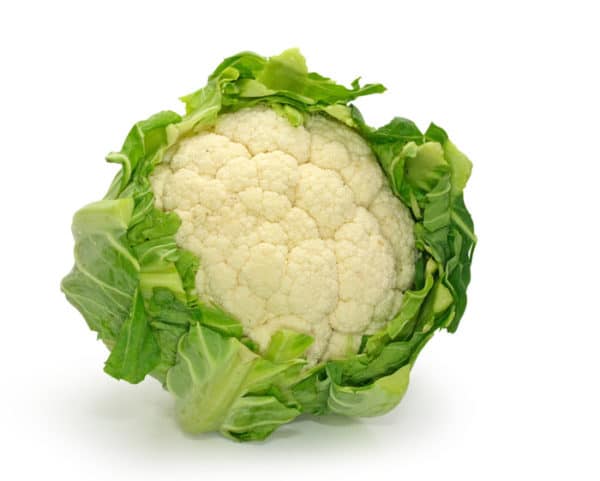

Today I will be talking about something called isothiocyanates.
This is part 3 of my series on “When Eating More Greens is Not a Good Idea”. Again, the five examples I am discussing with you where greens may cause worsening symptoms in your client are rare…but it is still good to be aware of – and to be able to recognize – these incidents in case you come across them.
What are isothiocyanates?
Sulforaphane is a compound within the isothiocyanate group. Isothiocyanates are sulfur-containing compounds, some of which are found in high amounts in Brassica vegetables such as broccoli, cauliflower, bok choy, cabbage, Brussels sprouts, collard greens, watercress, arugula, turnips, and others. These vegetables don’t contain the compound itself, but it is produced by a chemical reaction. Brassicas have sulfur-containing chemicals called glucosinolates. When chewed or chopped, they release an enzyme called myrosinase, that is also in small quantities in our intestinal tract. Myrosinase breaks down the glucosinolates, and then they are turned into the isothiocyanate.
Isothiocyanates inhibit the enzyme thyroid peroxidase (TPO). So why is this bad? Well, it isn’t bad for most people, but for some people their body can’t properly break down the isothiocyanates due to impaired detoxification pathways, so isothiocyanates can buildup and impair thyroid function by inhibiting the TPO. TPO helps make the thyroid hormone, so your client could become hypothyroid (have an underactive thyroid).
Someone who already has an underactive thyroid, or people with restricted diets (such as the Specific Carbohydrate diet and the FODMAPs diet) who might already be iodine deficient, could be impacted as well.
As your client’s health detective, it is up to you to ascertain if isothiocyanates might be a problem for them. You can try some of the suggestions listed below, or you can better determine their thyroid status through functional testing.
So why not just skip the Brassica veggies in this case?
Brassica veggies are just way too healthy for your client to skip. At least don’t drop them from your client’s diet without first trying a few things. The sulforaphane in Brassicas is very beneficial to the liver; and it also promotes the production of glutathione, one of the most potent anti-oxidants in your body. Research has found isothiocyanates to be a potent protector against cancer.
So what can I do for my client if they have a sensitivity to isothiocyanates?
- Supplementing with iodine and/or sea vegetables rich in iodine can counteract the effect; with the addition of the iodine, your client won’t become hypothyroid…assuming they don’t overdo it on the Brassica veggies they consume! Drinking a quart of kale juice is too much if your client is hypothyroid, but if he/she only eats a little kale, the iodine in a little sea vegetables – such as kelp – will help.
- Preparation of the Brassica vegetables can also make a difference!
- Have your client lightly steam them (versus overcooking them), as this will decrease the availability of isothiocyanates, as well as the sulforaphanes.
- Fermentation actually deactivates the effects of the isothiocyanates while maintaining the high sulfur content.
- Have your client eat iron-rich foods. Excessive sulfur from Brassica veggies can lower iron and copper, which can result in anemia as well as low thyroid function. So have them add dulse, kelp, or any other sea vegetable to get both their iodine and iron requirements.
- Have your client try consuming smaller amounts of Brassicas…everybody is different. There may be a small amount of veggies that they can eat, along with the iodine, that works for them.
So what is another instance where your client might have an issue with additional greens? In Part 4 of this series I will be talking about leaky gut and inflammation.
I hope you are finding this series helpful!
P.S. In my Nutritional Endocrinology Practitioner Training (NEPT), I offer many hours of training and mentorship that can impact your client’s ability to heal – everything from their digestion to their thyroid. Learn more about the NEPT training and other practitioner-focused resources, programs, and tools!
Share this:

Are you feeling stuck?
Do you feel as if something is missing from your practice that's keeping you from delivering breakthrough outcomes for your clients?.
Recent Posts
Our Programs
Nutritional Endocrinology Practitioner Training (NEPT)
The Mastery and Certification tier is our flagship program and provides everything you need to feel confident as a practitioner who knows how to get results that lead to healthy and happy clients.
Functional Assessment Mastery
Explore the relationships between the most important hormones and their relationship with nutrition.
Functional Nutrition Mastery
Learn how to support your clients to eat and supplement in a way that reduces and eliminates chronic symptoms.
Medical Disclaimer: The information on this website is not intended to replace a one-on-one relationship with a qualified health care professional and is not intended as medical advice. It is intended as a sharing of knowledge and information from the research and experience of Dr. Ritamarie Loscalzo, drritamarie.com, and the experts who have contributed. We encourage you to make your own health care decisions based upon your research and in partnership with a qualified health care professional.
Disclosure: Sometimes (but not always), when I share resources in my programs, newsletter, and on my website, I'm using an affiliate link, which means I do make money if you buy. My credibility is extremely important to me; therefore, I only endorse the products, services, and people I believe in. DrRitamarie.com is independently owned and the opinions expressed here are my own.
Click here to see our Privacy Policy.











[…] previous blog post on isothiocyanates offered a good example of a situation where a little detective work might have led you to […]